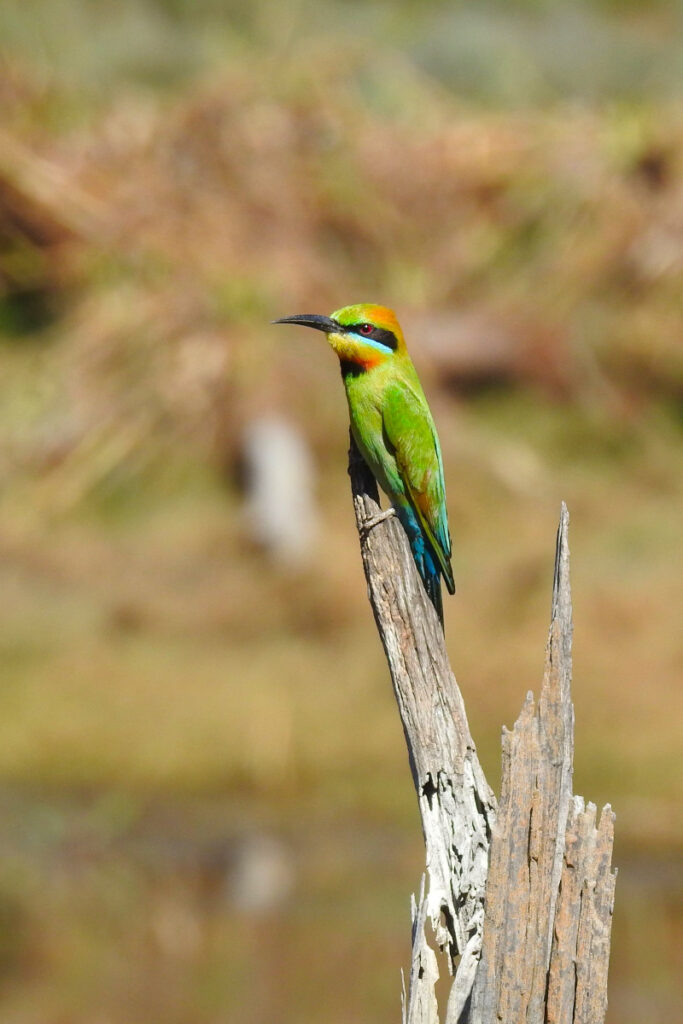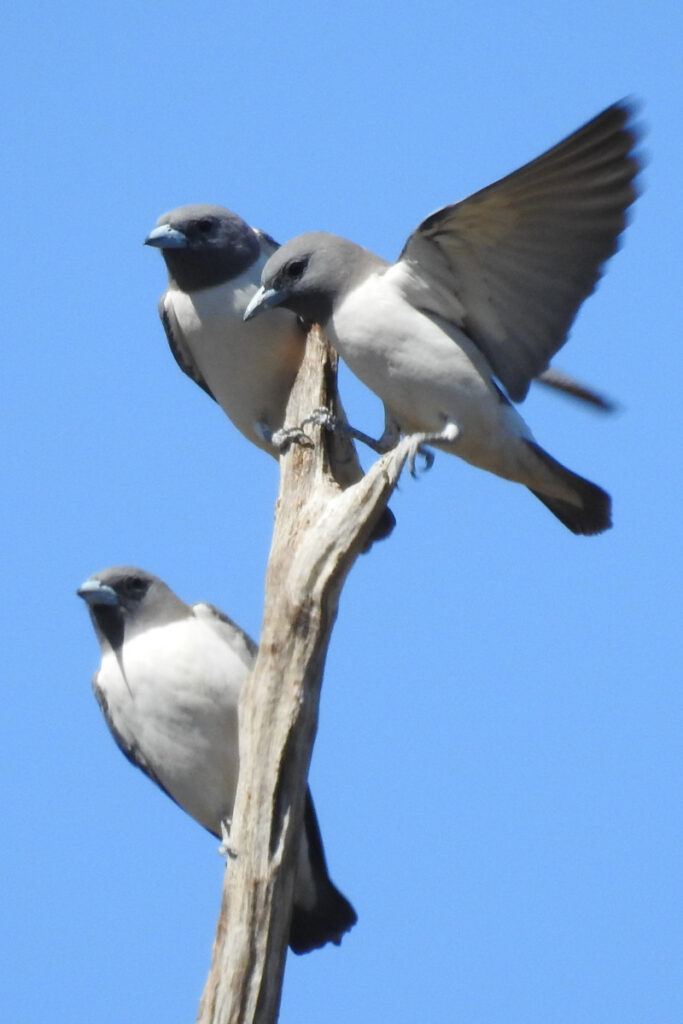I decided to give the old Coach Road a drive, to get an idea what it must have been like racing through the bush in a horse-drawn coach from Darwin to Pine Creek, during the gold rush days. This remaining part of the road heads from near the modern town of Batchelor (which didn’t exist yet!) through to Adelaide River, where the coach passengers would have spent the night before crossing the river and continuing on their journey to Pine Creek the next day.
A journey that probably takes less than an hour and a half, these days…
Haimes Royal Mail Coaches provided this vital and well utilised transport and freight link between Southport and the goldfields. The trip to Adelaide River cost £1 12/- 10d one way.
Southport was the main port for the goldfields, located south of Palmerston (as Darwin was then called), hence the name… Through the 1870’s and 1880’s, Southport became a thriving town, with several pubs providing thirst-relief for the residents.
By 1912, Southport lost its importance and began to decline. Many commercial buildings were dismantled or moved elsewhere for reuse. Today, the original dirt streets of the town are laid out in a neat grid and people still live here, although with no local facilities. Meanwhile, the southern suburbs of Darwin threaten to encroach on the quiet lifestyle of this once booming place.
The Drive
Despite its reputation, and the rather foreboding sign at the start, the old Coach Road had actually just been graded when I headed down for my drive through – so much for being “unmaintained” I guess. But it meant that apart from one sandy section and some occasional corrugations, the road was in pretty reasonable condition for my drive.
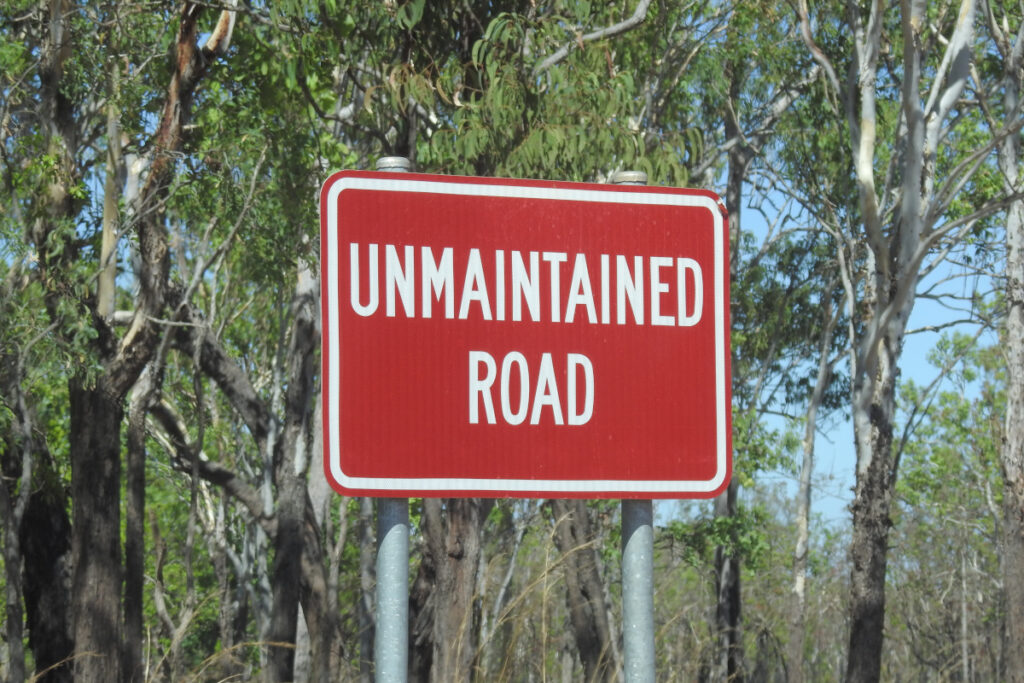
Some bits, like this very rough water crossing (one reminder of why old Coach Road is only drivable in the Dry season), still required care, otherwise the drive in my modern, air conditioned vehicle with upgraded suspension, was actually rather pleasant!
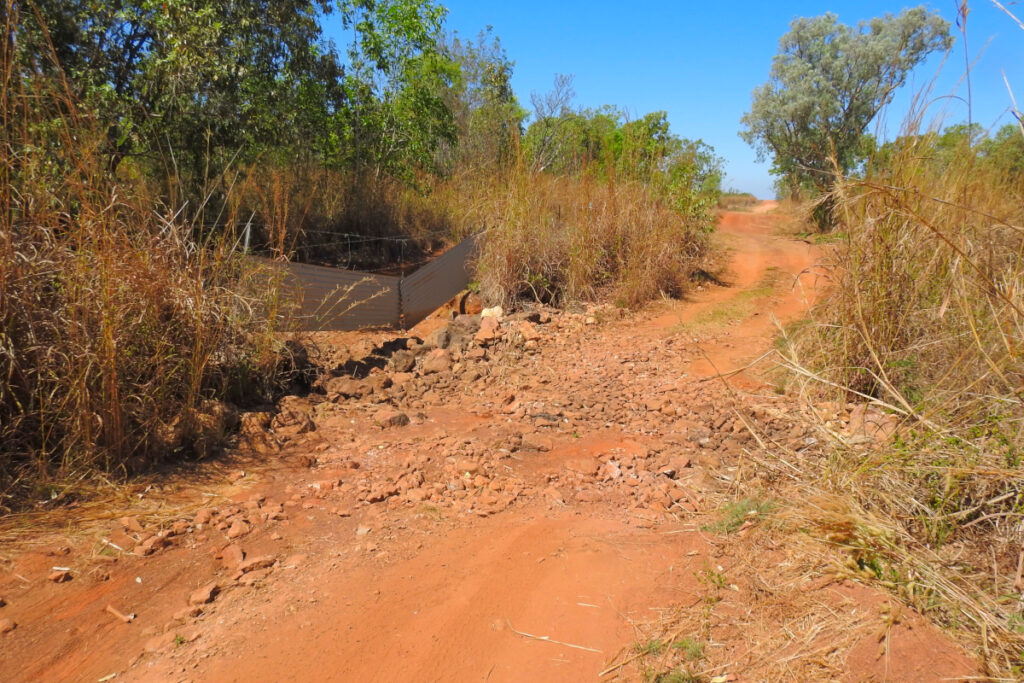
Of course, nothing like the original trip would have been in a horse-drawn coach!
Coach travel had a reputation for being very slow, rough and just plain uncomfortable! I have enjoyed a real coach ride pulled by four horses when I was in Longreach nearly 10 years ago!!! They took us out for a gallop over dirt tracks in the area around Longreach and it was pretty wild and rough, but I found it very interesting and exciting.
But it was only for a short while, not days on end!
These days, they use a modern replica coach for the ride, which is mostly made from metal, so it is much lighter than the original wood-built coaches were.
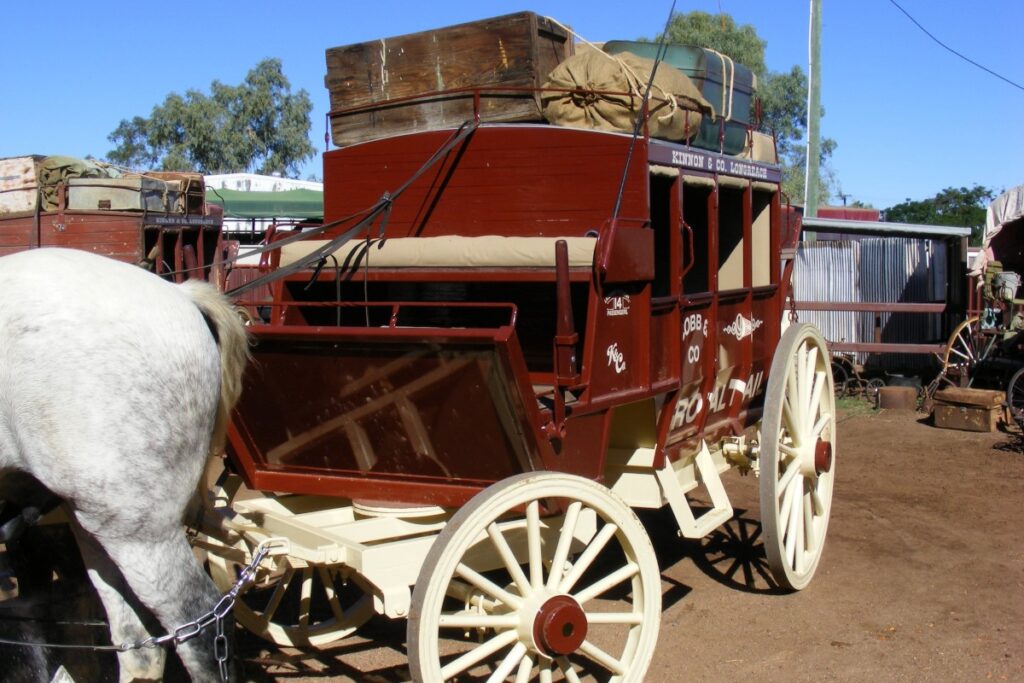
In fact, they had a fully restored and original Cobb&Co coach on display and they reckon that it is too heavy for modern horses to pull!
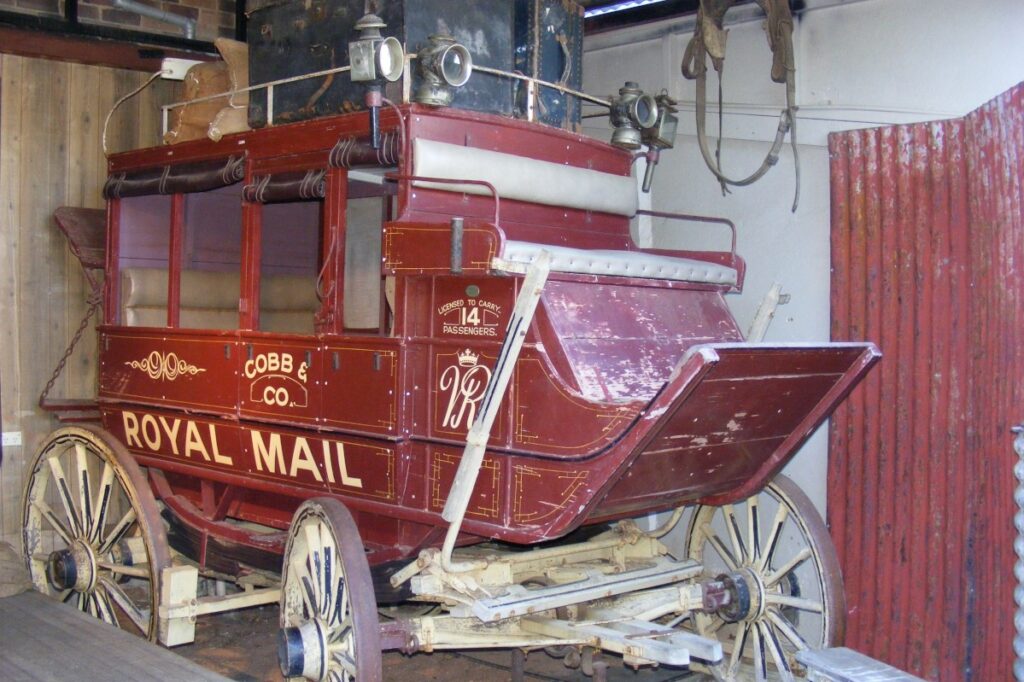
ABOVE: The original Cobb&Co coach is beautifully restored and on display. Made fully from wood, it is a real work of art.
I find it fascinating that the coach is licensed to carry 14 passengers. It would have been pretty cosy inside the coach, especially in summer…
Most passengers would have been very pleased to eventually arrive at their destination.
The railway opened through to Pine Creek in 1888, built along side the old coach road and probably making the journey to and from the goldfields much more pleasant. Presumably the opening of the rail put a dent in Haimes coach services business, although the cost of the rail fare might have been out of reach for many, so presumably coach services still had a place, even after the railway came through.
The present day ‘Ghan’ railway line, which finally joined Adelaide and Darwin in the 1980’s (some 126 years after it was first proposed), replaced this narrow gauge railway which closed for good in the 1970’s. Nothing much remains now to be appreciated, but although some original structures are still visible in the landscape, they are fast being overtaken by nature.
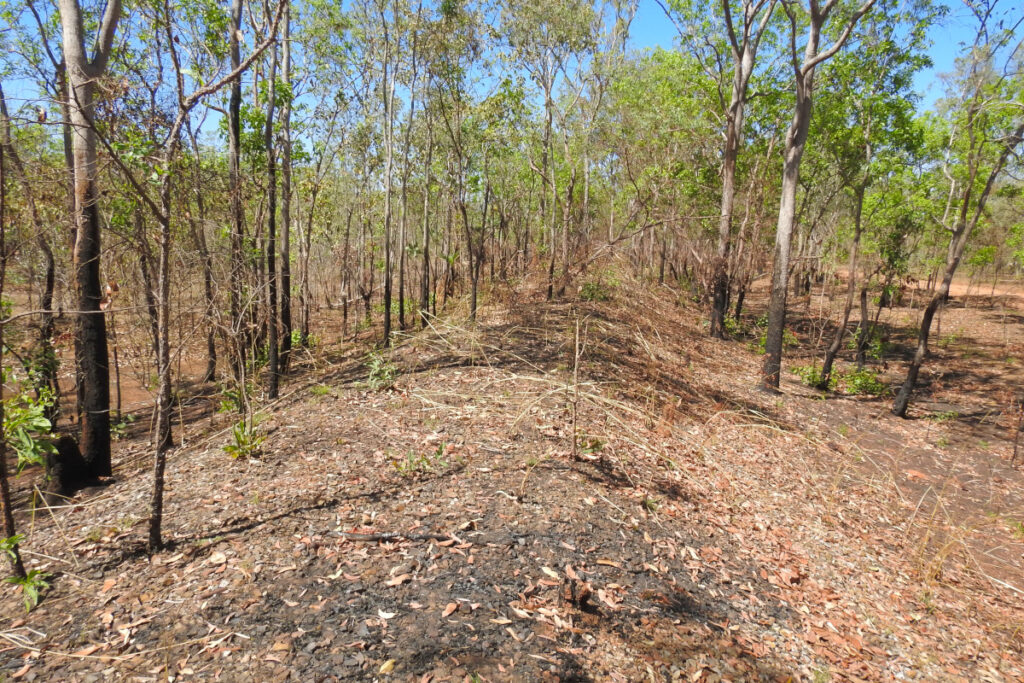
ABOVE: The original raised railway embankment is still visible, as are other structures. Unfortunately, most of the history has been cleared away, including most bridges.
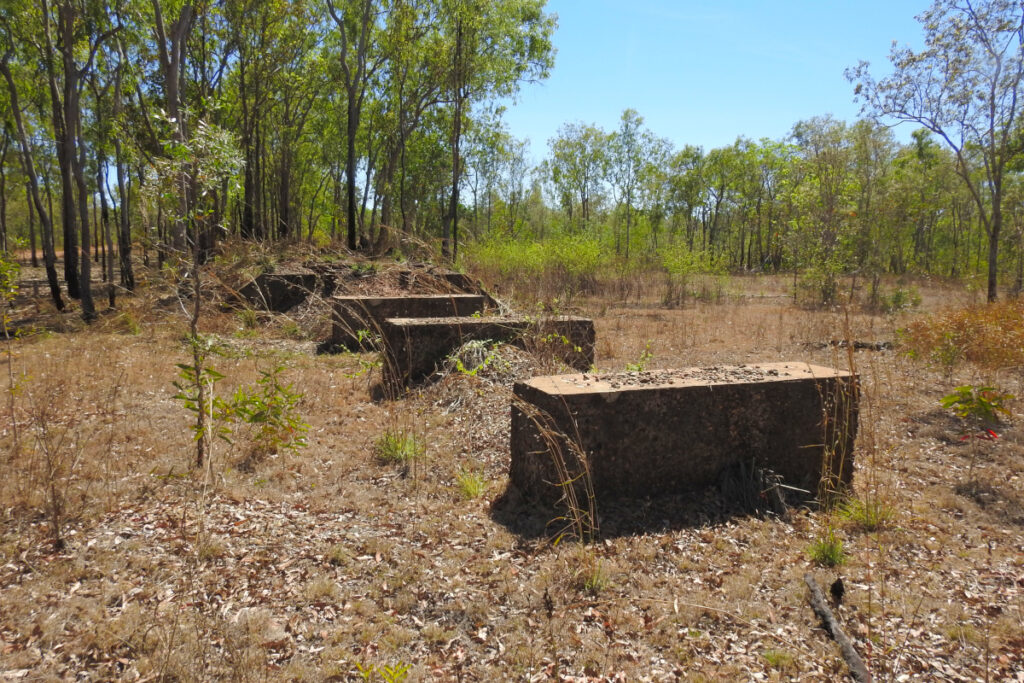
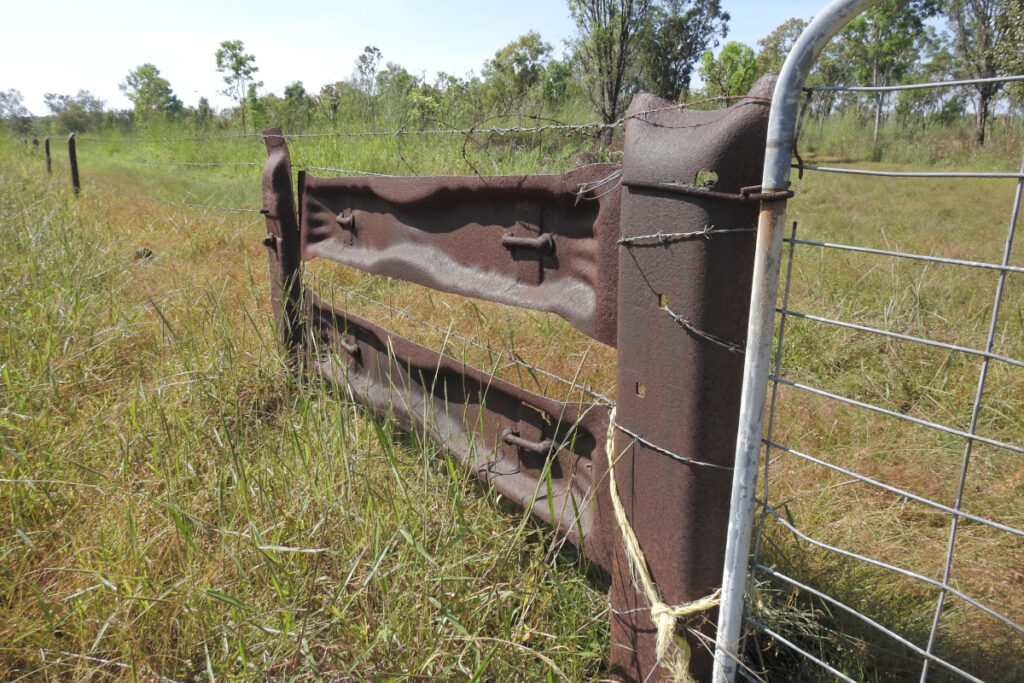
ABOVE: It is not unusual to see old sections of the railway used to build sheds and most of the metal railway sleepers became handy as long-lasting fence posts on properties around the area.
I had assumed that metal sleepers were used in the North to reduce damage from ever-present termites, but… I have been told that metal sleepers were used because they didn’t sink into the soggy mud in the Wet season (apparently the concave section underneath trapped air and so the sleepers sort of ‘floated’ on the mud), whereas wooden sleepers tended to subside into the muddy mire… and were eaten by termites?
Gould Airstrip
Constructed in late 1943 by the RAAF, Gould Airfield is located just south of Batchelor Airfield. The wartime runway, taxiways and revetments (where the planes were parked between missions) are still visible, but are now being reclaimed by nature.
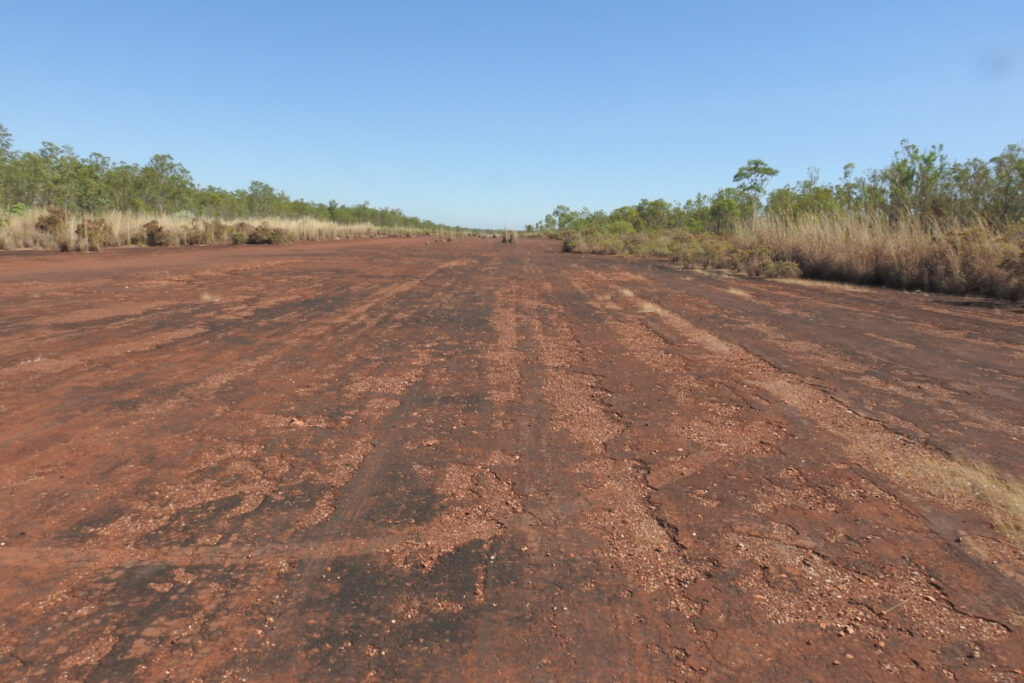
ABOVE: The runway is still visible, although not in great condition at the north-west end, where gamba grass has invaded and begun breaking up the surface.
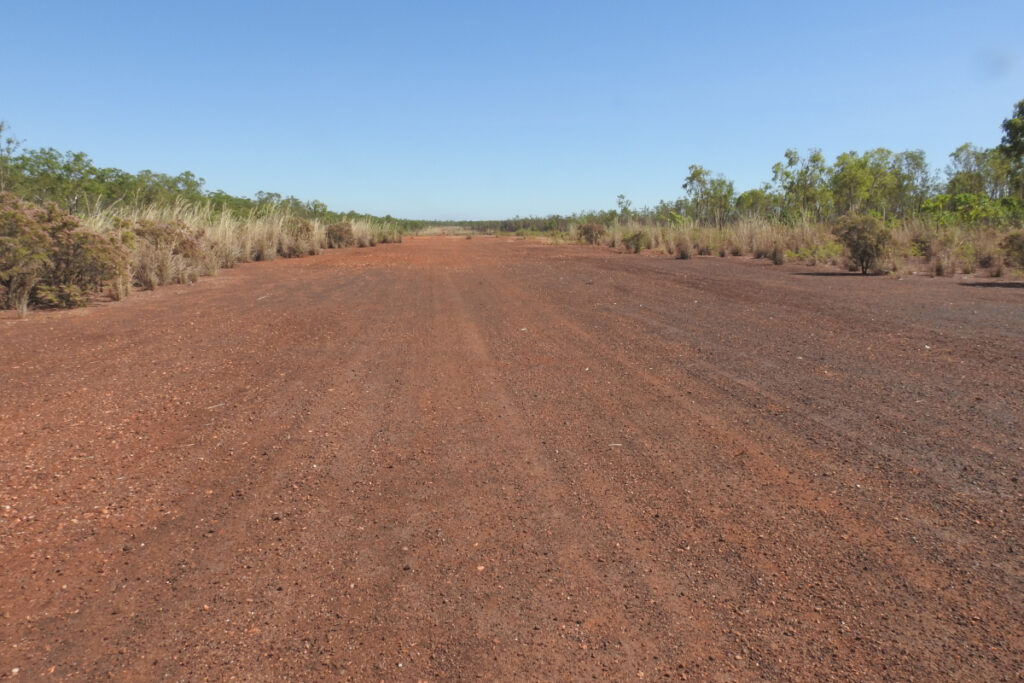
ABOVE: The south-east end of the roughly 1600 metre-long runway is still in pretty good condition though.
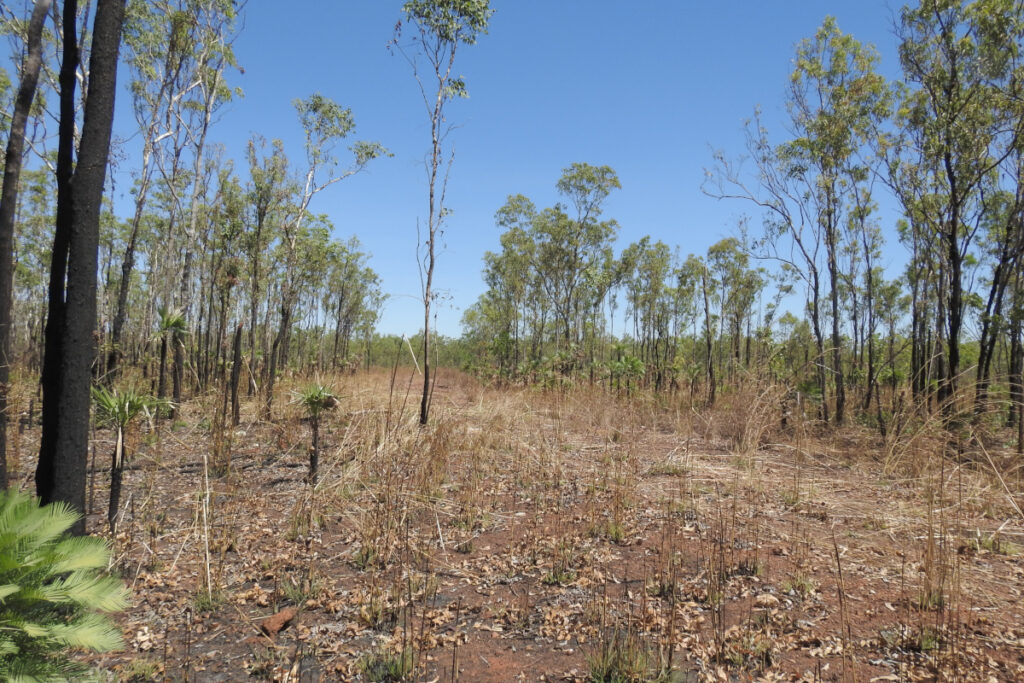
ABOVE: A taxiway to the revetments is slowly being overtaken by nature.
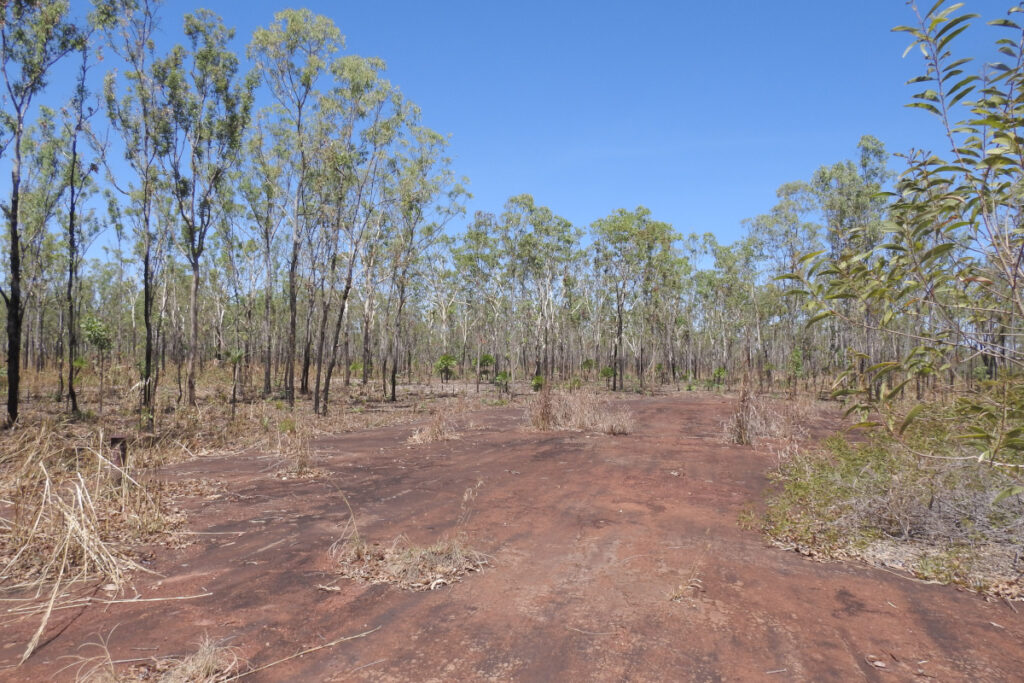
ABOVE: One of the plane parking revetments, still visible today. Planes were parked here between missions and with a bit of clean up, might still be in use today.
It was quite evocative wandering and exploring this place, given that it is all pretty extant, although overgrown with trees and gamba grass. It covers a vast area and there are some interesting things to discover in the area as I wandered around.
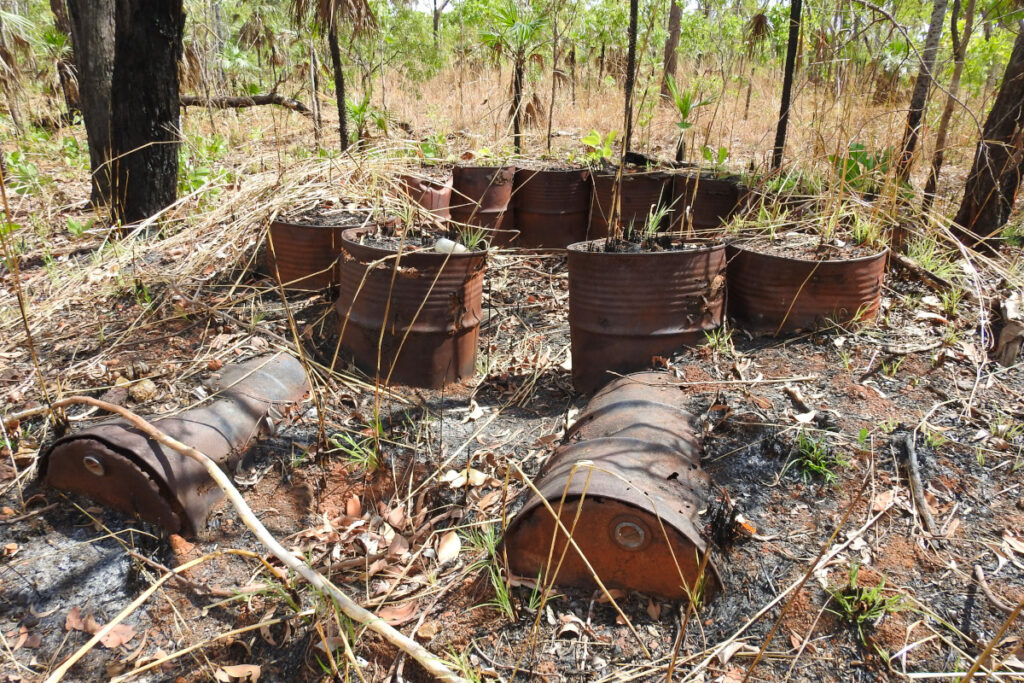
I found what I think might be a sentry post made from old 44 gallon drums and I suspect these were anti-aircraft gun emplacements protecting the airfield perimeter. These are in pretty good condition, considering they have been abandoned to the tropical elements for nearly 80 years.

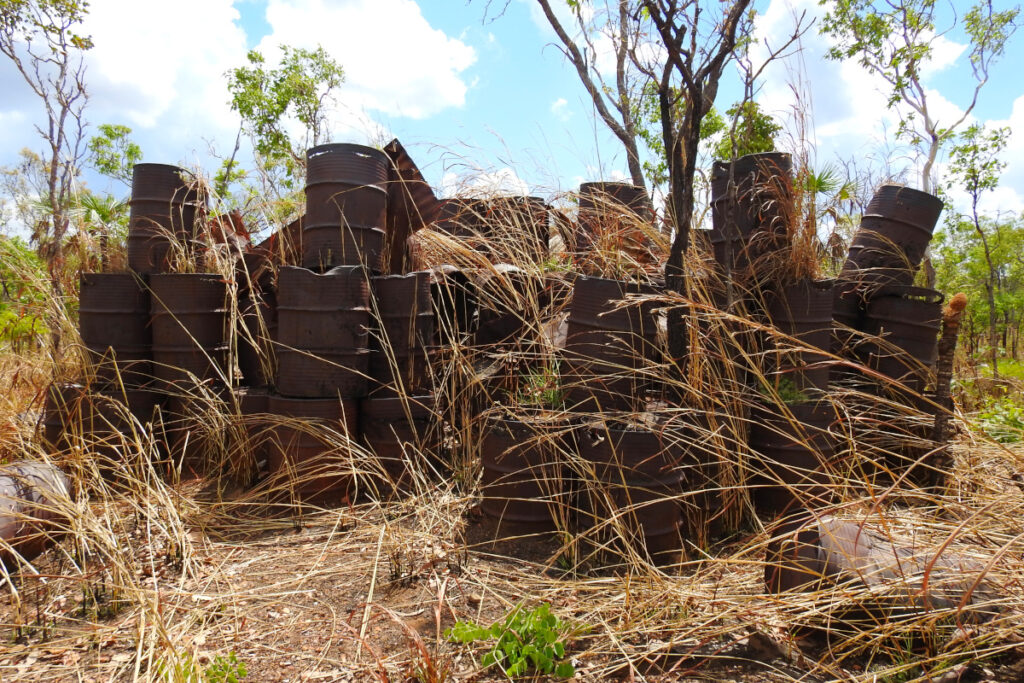
During the war a railway siding was constructed, to off-load provisions for the troops stationed near here. I did find this dam which, if historic, may have supplied water for both the railway and later the airfield.
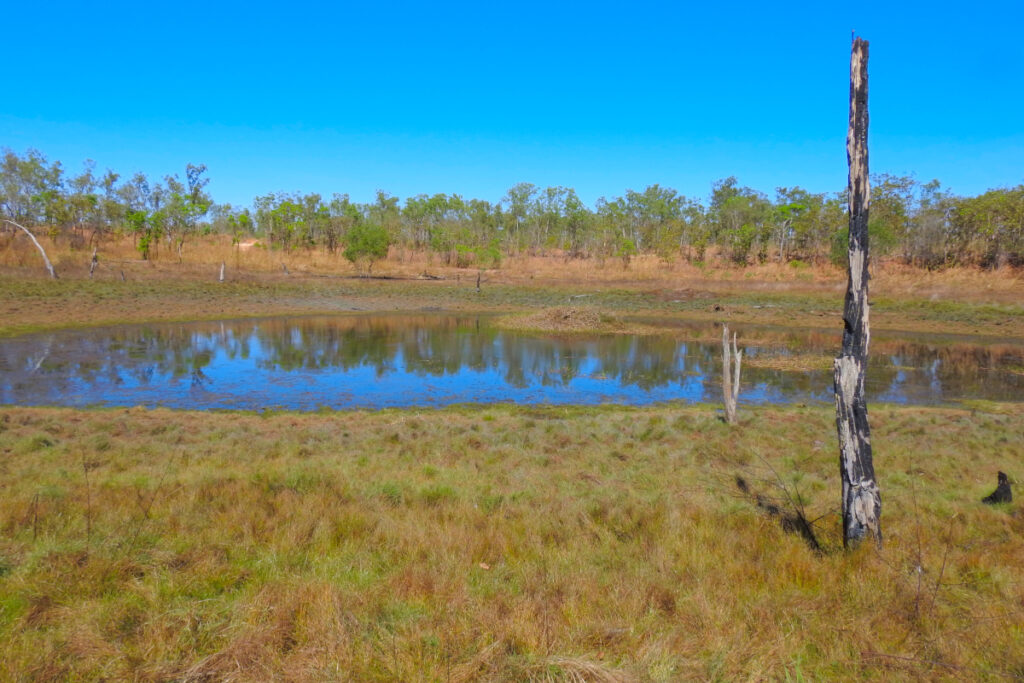
Today, Rainbow Bee-Eaters and White-beasted Woodswallows hunt for insects above the blue water.
